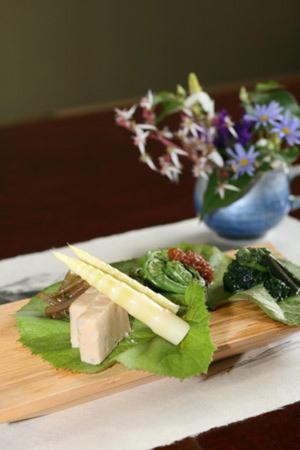Hamaya Residence, Nationally Designated Important Cultural Property
menuMenu
A Gassho-style farmhouse designated as a National Important Cultural Property, offering a glimpse into the traditional life of the Gokayama Gassho-style village.

Highlights
- A Gassho-style farmhouse designated as a National Important Cultural Property
- Experience the traditional life of the Gokayama region
- Built in Bunka 9 (1812)
- With a 13.5 ken span and 5.5 ken depth, one of the largest in the Gokayama region
- Full of highlights, including the thatched roof, interior construction, and exhibits offering glimpses into daily life at the time
Basic Information
- Address
- 254 Tamaki, Nanto City, Toyama Prefecture Search for tourist attractions in Toyama
- Access
- By car: Approximately 1 hour and 30 minutes from Toyama IC via National Route 156. By bus: Approximately 2 hours from Toyama Station by the Kanko-no Bus "Gokayama Line"; get off at the Tamaki bus stop, a 5-minute walk from there. Show route
- Op.Hours
- 9:00 AM to 5:00 PM
- Cld.Days
- Monday, Tuesday, Wednesday, Thursday, Friday
- Fee
- 500 yen for adults, 250 yen for children
- INFO
- Visits are by reservation only. Please contact us by phone in advance if you wish to visit.
Overview
Recommended nearby attractions
Murakami House

A four-story traditional farmhouse with a thatched roof, designated as an Important Cultural Property of Japan, located in the Gassho-style village of Gokayama.
Former Mori Family Residence

A precious Machiya (traditional townhouse) where you can experience the history and culture of the Mori family, wealthy merchants who thrived through Kitamae-bune shipping in Toyama.
Uchiyama Residence (Toyama Prefectural Citizens' Hall Branch)

Step back in time and explore the remarkably preserved mansion of a wealthy farmer from the Echizen region, offering a glimpse into Edo-period life.
Former Kogura Residence

A historic old house with a legend from the Genpei War.
Saeki Residence

The Saeki Residence is a designated Important Cultural Property of Japan located in Minoshima, Fukuoka-machi, Takaoka City, Toyama Prefecture.
Former Toyama House Folk Museum

A precious Gassho-style building where you can experience the history and culture of Shirakawa Village.
Arakawa House

An Important Cultural Property showcasing the exquisite architecture of the mid-Edo period.
Kitaya Residence

A national Important Cultural Property where you can experience traditional Kaga Machiya architecture.
Aikura Gassho-style Village

The Aikura Gassho-style Village, a UNESCO World Heritage site. The sight of gassho-style houses with their characteristic thatched roofs will make you feel like you've stepped back in time.
Wada House

A Gassho-style house, an iconic symbol of Shirakawa-go.
Nearby Hotels
Gokayama Onsen Akaokan

Guest House YAMASHITA-YA

Gokasanso

Gassho Minshuku Nakaya

Minshuku Yomoshirou

Choyomon

Iimikan Yoshine

Sakuragaike Kurgarden

